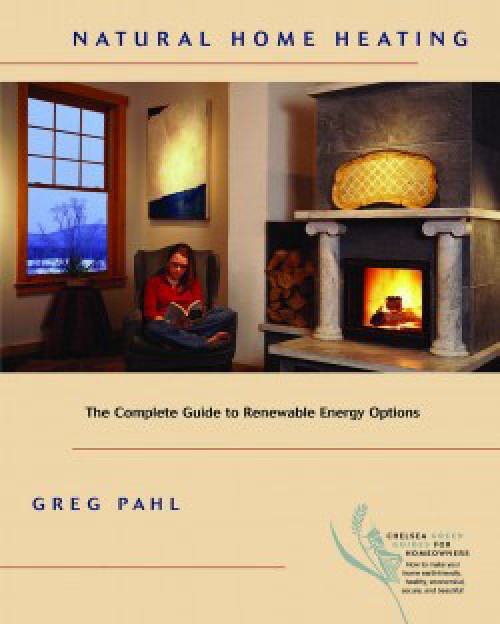by By Greg Pahl
Chelsea Green Publishing, 2003
If you consider that an estimated 25 percent of the energy used in the U.S. is spent heating buildings, and you feel that it would be beneficial if that energy came from sources other than the burning of fossil fuels, and you’d like to have at your fingertips a comprehensive layout of the alternative possibilities, then this is the book for you.
Even if you own a high-rise in Boston, you might just have your interest piqued by the notion of corn burners, pellet stoves, or heat pumps (more about these later); however, the author, Greg Pahl, states in his introduction that he is aiming this work at homeowners with the question, “How can a homeowner reduce or eliminate his/her use of fossil fuels?”
Comprehensive is the word for this piece of work. Pahl starts you off with the physics of heat, the basics of heating systems, fuel possibilities, and heat sources, and goes on from there to devote long, well-thought-out sections to solar, wood, biomass, and geothermal heat. Within each section, he ranges from the simple to the complex, from the most elementary (don’t shovel your wood ashes into a paper bag) to the arcane (if you illuminate 10 100-watt light bulbs for one hour [1 kWh], you have consumed 3,413 British Thermal Units [BTUs] of energy).
He tells you what equipment is available, how it operates, what it costs, and the pros and cons of running it. The information in this book is voluminous on all subjects. Did you know that historically the cheapest fuel (if you are buying it) is corn? That a masonry stove might cost you $12,000? That there are already 500,000 pellet stoves in the U.S. using 750,000 tons of pellets every year? Or that to determine the best angle for your solar collector, you subtract 15 degrees from your latitude for summer and add 15 degrees to your latitude in winter?
Pahl clearly has his preferences, and he hits his stride in the sections on biomass and geothermal heat. He likes pellet stoves and he prefers a hydronic (radiant hot water) delivery system. Pellets can be made from sawdust, bark, or other organic waste products and are delivered automatically and thermostatically into any size and type of heating system. The stoves can also be made to burn cherry or olive pits or corn, barley, wheat, and other grains.
Pahl’s real favorite is the heat pump – that is, his “geothermal” system. He likes it so much that by the time you finish this section you will know more about the physics and mechanics of heat pumps than you ever wanted to know. The heat pump is a technological marvel – almost a something-from-nothing proposition – and I’m sure it’s bound for glory, but my one small criticism of this wonderful book is that Pahl carries on about it long after the reader has grasped the idea.
Natural Home Heating will be very valuable for the novice searching for comparative information and perhaps surprising to the cut, split, and seasoned home heater.


